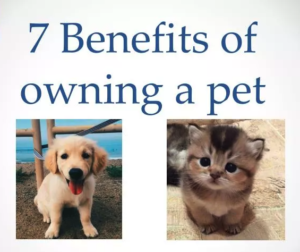 In the ever-evolving landscape of animal welfare, shelters face many challenges in their mission to find loving homes for their residents. While traditional outreach methods have their merits, they often fall short in reaching and engaging potential adopters effectively. In today’s digital age, the imperative for innovation becomes increasingly evident as shelters seek to revolutionize their outreach efforts. This article explores the critical role of innovative strategies in animal shelter outreach and marketing, providing insights and practical guidance to maximize impact and save lives. Continue reading “Innovative Outreach and Marketing Strategies for Animal Shelters on a Budget”
In the ever-evolving landscape of animal welfare, shelters face many challenges in their mission to find loving homes for their residents. While traditional outreach methods have their merits, they often fall short in reaching and engaging potential adopters effectively. In today’s digital age, the imperative for innovation becomes increasingly evident as shelters seek to revolutionize their outreach efforts. This article explores the critical role of innovative strategies in animal shelter outreach and marketing, providing insights and practical guidance to maximize impact and save lives. Continue reading “Innovative Outreach and Marketing Strategies for Animal Shelters on a Budget”
Innovative Approaches to Pet Adoption Programs Specifically for Shelters with Limited Resources
 In the realm of animal welfare, the quest for innovative solutions is paramount, especially for shelters operating on limited resources. While comprehensive adoption programs may seem daunting for shelters with constrained budgets and staffing, there are creative and resourceful approaches that can still make a significant impact on finding loving homes for shelter animals. Let’s explore some innovative strategies tailored specifically for shelters facing these challenges: Continue reading “Innovative Approaches to Pet Adoption Programs Specifically for Shelters with Limited Resources”
In the realm of animal welfare, the quest for innovative solutions is paramount, especially for shelters operating on limited resources. While comprehensive adoption programs may seem daunting for shelters with constrained budgets and staffing, there are creative and resourceful approaches that can still make a significant impact on finding loving homes for shelter animals. Let’s explore some innovative strategies tailored specifically for shelters facing these challenges: Continue reading “Innovative Approaches to Pet Adoption Programs Specifically for Shelters with Limited Resources”
10 Things Most People Don’t Know About Cats
 As someone deeply passionate about animal welfare, particularly our feline friends, I’ve encountered numerous cats, each with their own enigmatic personalities and behaviors. Despite their ubiquity in our lives, there are still aspects of cats that often escape our notice or understanding. Let’s explore ten intriguing insights into the mysterious world of cats: Continue reading “10 Things Most People Don’t Know About Cats”
As someone deeply passionate about animal welfare, particularly our feline friends, I’ve encountered numerous cats, each with their own enigmatic personalities and behaviors. Despite their ubiquity in our lives, there are still aspects of cats that often escape our notice or understanding. Let’s explore ten intriguing insights into the mysterious world of cats: Continue reading “10 Things Most People Don’t Know About Cats”
10 Fascinating Facts Most People Don’t Know About Dogs
 As someone deeply immersed in the world of animal welfare, I’ve encountered countless dogs, each with their own unique personalities and quirks. Despite their prevalence in our lives, there are still aspects of dogs that often go unnoticed or misunderstood by many. Here are ten intriguing insights into our furry companions that might surprise you: Continue reading “10 Fascinating Facts Most People Don’t Know About Dogs”
As someone deeply immersed in the world of animal welfare, I’ve encountered countless dogs, each with their own unique personalities and quirks. Despite their prevalence in our lives, there are still aspects of dogs that often go unnoticed or misunderstood by many. Here are ten intriguing insights into our furry companions that might surprise you: Continue reading “10 Fascinating Facts Most People Don’t Know About Dogs”
The Pawsitive Health Benefits Associated with Pet Ownership
There’s a reason why dogs are known as “man’s best friend” and cats as our “feline companions.” Beyond the joy and companionship they bring, owning a pet offers numerous health benefits that can enhance our overall well-being. From reducing stress and boosting mental health to promoting physical fitness and providing a sense of purpose, the advantages of pet ownership are far-reaching. Continue reading “The Pawsitive Health Benefits Associated with Pet Ownership”
Do Cats Need Us? by Ed Boks
 It appears Rudyard Kipling may have been correct when he suggested cats walk by themselves and don’t need us to feel secure.
It appears Rudyard Kipling may have been correct when he suggested cats walk by themselves and don’t need us to feel secure.
A study released by the University of Lincoln concluded that cats, unlike dogs, do not need humans to feel safe, preferring to look after themselves.
Earlier research had suggested cats show signs of separation anxiety when left alone by their owners, in the same way dogs do, but the results of this study found they are much more independent than canine companions – and what we had interpreted as separation anxiety might actually be signs of frustration. Continue reading “Do Cats Need Us? by Ed Boks”
The Best and Worst Cities for Pets by Ed Boks

Nearly 85 million households in the U.S. that own pets want to live where their beloved companions can enjoy long, healthy lives without breaking the bank. The American Pet Products Association projects that in 2018, pet ownership will cost Americans over $72 billion.
Years ago, pet owners had access to only a handful of businesses offering animal services and supplies. Petco and PetSmart were among the biggest names. But the market for pet businesses is growing to fill increasing consumer demand. For example, in 2017, the pet food industry grew three times as fast as the packaged food industry. And there are new ways to buy goods for your animal, such as monthly subscription boxes. Continue reading “The Best and Worst Cities for Pets by Ed Boks”
Why do cats purr? by Ed Boks

There are many questions our children and grandchildren ask concerning the mysteries of our universe. Such as, why is the sky blue? Why do birds sing? And why do cats purr?
While we may often fail to provide satisfying answers to these difficult questions, we instinctively know that so long as the sky is blue, and birds sing, and cats purr – all is right with the world.
One of the things we love most about our cats is the feeling of contentment we share when they climb onto our lap and begin to purr. When cats purr we feel calmer and more peaceful – even if we don’t hear the purring, we can feel the soft reassuring vibration.
So, just why do cats purr? And how do they generate that entrancing sound? Continue reading “Why do cats purr? by Ed Boks”
Why do cats purr? by Ed Boks

There are many questions our children (and grandchildren) ask concerning the mysteries of our universe. Such as: Why is the sky blue? Why do birds sing? And why do cats purr? While we may often fail to provide satisfying answers to these difficult questions, we instinctively know that so long as the sky is blue, and birds sing and cats purr, all is right with the world.
One of the things we love most about our cats is the feeling of contentment we share when they climb onto our lap and purr. When cats purr we feel calmer and more peaceful – even if we don’t hear the purring, we can feel the soft reassuring vibration.
So, just why do cats purr? And how do they generate that entrancing sound? Continue reading “Why do cats purr? by Ed Boks”
What we learned from Marty Crane and Eddie by Ed Boks

Many will rightly sing the praises due the remarkable actor, John Mahoney, who died today. However, I want to take a moment to point out the important public health service Mahoney provided through his character on the popular TV series Frazier. “Marty Crane” and his loyal dog “Eddie” beautifully presented the many wonderful benefits pets afford our senior citizens.
According to the Journal of the American Geriatrics Society there are many health benefits for seniors who have a pet or two. In fact, the Journal states there are many benefits for the seniors, the pets and society as a whole. Geriatric researchers found seniors with pets more active than seniors without pets and they score higher in their ability to carry out normal activities of daily living. Many positive effects on physical well-being are identified, including a healthy ability to fend off isolation and loneliness. Continue reading “What we learned from Marty Crane and Eddie by Ed Boks”

